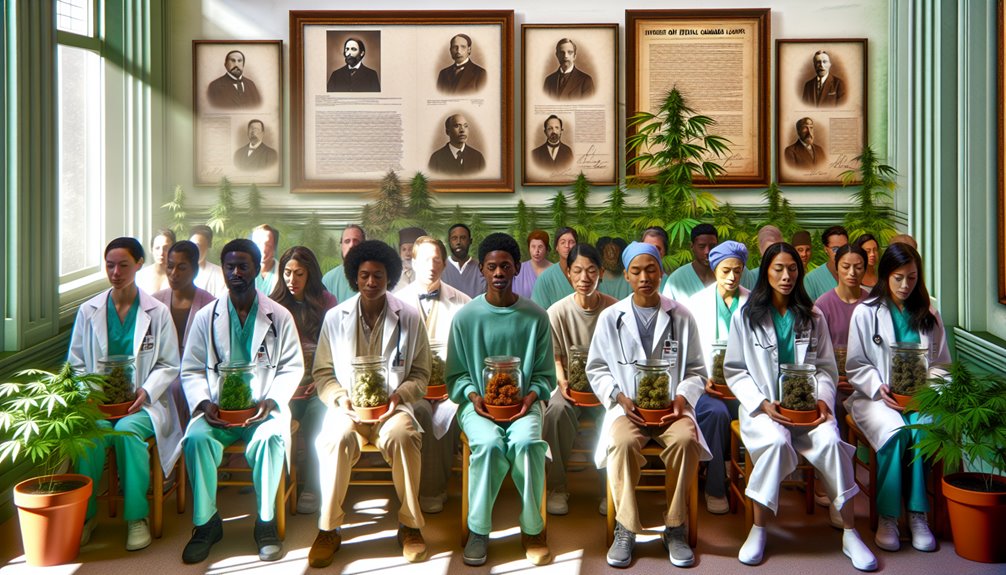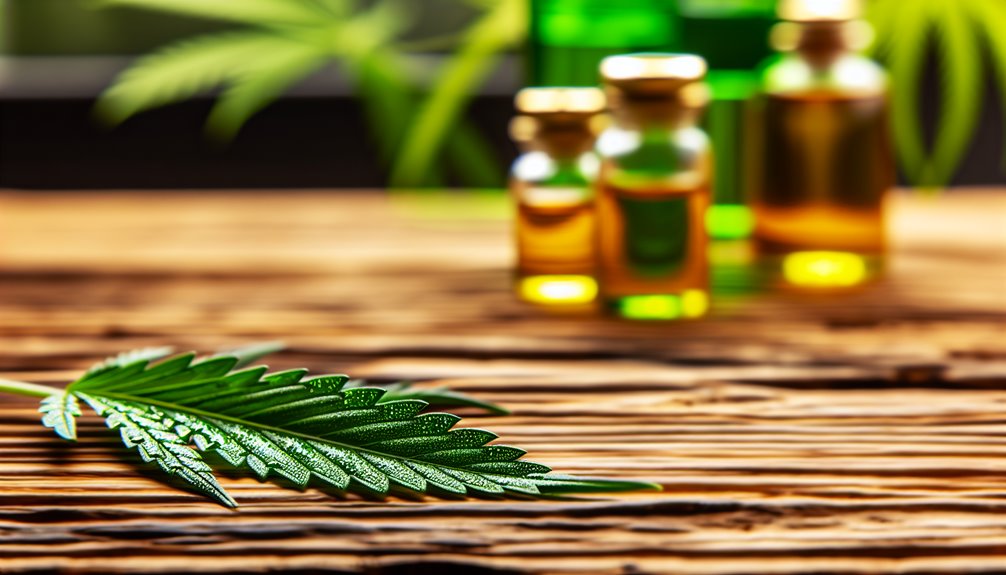Did you know that a large portion of medical cannabis users in the U.S are younger adults, specifically those without insurance? It's a fascinating trend revealed in a recent retrospective study. This research has also highlighted the predominant use of cannabis for chronic pain, often as an alternative to opioids. It's clear that healthcare professionals play a pivotal role in gauging patient needs and monitoring treatment efficacy. Stay tuned, as we explore these findings and the broader implications for the future of medical cannabis use.
Historical Overview of Medical Cannabis Use in the U.S

While the use of cannabis for medicinal purposes dates back to 2737 B.C. in China, its journey in the United States is a complex tale of shifts in societal perception, legislative changes, and scientific understanding. Initially, you'd find cannabis in medicinal concoctions, aiding ailments from gout to malaria. Yet, by the 20th century, historical legislation like the Marijuana Tax Act of 1937 and the Harrison Narcotics Tax Act of 1914 began to criminalize its use. Despite this, cultural attitudes began to shift in the 1960s, with numerous reports recommending decriminalization. The 1970s saw Congress repeal most mandatory penalties for drug offenses, marking a significant step towards decriminalization. Modern developments have seen more lenient state-level legislation, like California's Proposition 215 in 1996, leading to clashes between federal and state laws. Overall, cannabis use for health has been a rollercoaster of acceptance and rejection.
Demographic Trends in Medical Cannabis Use
Delving into the demographic trends in medical cannabis use reveals a fascinating spread across different age groups, genders, ethnicities, and socioeconomic statuses. The age distribution shows prevalence decreases with age, with the highest use among 18-24 year olds. Gender differences are evident, with more males seeking certification, but females reporting more comorbid conditions and higher prevalence of use. Majority of users are Caucasian, but Hispanics report higher use rates. People residing in states where medical cannabis is legal, and those with poorer self-rated health statuses, are more likely to use medical cannabis. A significant point to note is that a large proportion of medical cannabis users are uninsured individuals. Understanding these trends can help you serve diverse patient populations more effectively, while acknowledging the role of sociodemographic factors and regional regulations in medical cannabis use.
Common Health Conditions Treated With Medical Cannabis

As you navigate the vast landscape of medical cannabis, it's important to understand the common health conditions it is often used to treat. Chronic pain tops the list, with patients replacing conventional pain meds, such as opioids, with cannabis for conditions like nerve damage and cancer. It's often used for neurological disorders too, including multiple sclerosis, epilepsy, and Parkinson's disease. Anxiety and PTSD also feature prominently, with some evidence pointing to symptom reduction. Its use extends to treating nausea from chemotherapy, and conditions related to HIV/AIDS like anorexia. While research is ongoing for conditions like Alzheimer's, the current evidence remains insufficient. Remember, the medical cannabis field is continually evolving, opening new avenues for patient care.
The Role of Healthcare Professionals in Medical Cannabis Prescription
Understanding the role of healthcare professionals in medical cannabis prescription is essential, particularly in relation to the evaluation and eligibility process. These professionals conduct thorough evaluations, including analyzing your medical history, symptoms, and existing conditions to determine if medical cannabis is a suitable treatment option for you. They develop personalized treatment plans, considering the unique combination of cannabinoids in different strains to tailor a plan that maximizes therapeutic benefits while minimizing potential risks. They also guide you through legal requirements and provide necessary healthcare training. Additionally, they guarantee compliance with prescription protocols and offer ongoing monitoring of your treatment's effectiveness. Their role is not just prescribing but also educating, thereby promoting safe and effective use of medical cannabis.
Patient Experiences and Outcomes With Medical Cannabis

After unpacking the significant role of healthcare professionals in prescribing medical cannabis, it's time to explore your experiences and outcomes as a patient. Most of you reported satisfaction with your treatment, pointing to an improved quality of life and effective symptom management. Specifically, many of you experienced a reduction in pain, improved physical functioning, and enhanced social interactions. The feedback indicates that medical cannabis is not just a remedy but a vital part of your quality of life. However, the journey isn't always smooth. Some of you reported adverse effects, but notably, these were often deemed not burdensome or only slightly so. Overall, the positive health outcomes and high treatment satisfaction reveal the potential of medical cannabis in enhancing patient wellbeing.
Future Outlook: Medical Cannabis Use and Research
Delving into the future outlook of medical cannabis use and research, it's clear that continuous advancements are broadening the scope of its applications. Future innovations promise personalized medication plans, novel delivery systems, and refined cultivation techniques. You'll see more rigorous clinical trials, seeking to reveal new therapeutic avenues from the entire cannabis spectrum. Additionally, technology integration, such as VR and remote patient monitoring, is set to enhance patient care. However, regulatory challenges persist. While funding for cannabis research is rising, the focus remains skewed towards its harms rather than medical benefits. A shift towards more balanced research funding and regulatory refinement is necessary to guarantee safe, effective access to cannabis-based treatments. The future of medical cannabis holds promise, but traversing the evolving landscape requires dedication and collaboration.
Conclusion
You've seen how medical cannabis is transforming the healthcare landscape, particularly for chronic pain management. It's the younger, uninsured folks who are benefitting most. But remember, it's not a free-for-all. Doctors play a key role in ensuring it's used correctly. And the results? Patients report a boosted quality of life. So here's to the future of medical cannabis research, may it continue to light the way for innovative healthcare solutions.
If you're curious to learn more about how medical cannabis can help you or someone you know, I invite you to visit Fells Point Cannabis Docs of Maryland. Our friendly team is here to answer your questions and guide you through the process. Feel free to give us a call at (410) 401-4200. We look forward to helping you discover how medical cannabis can enhance your well-being!
